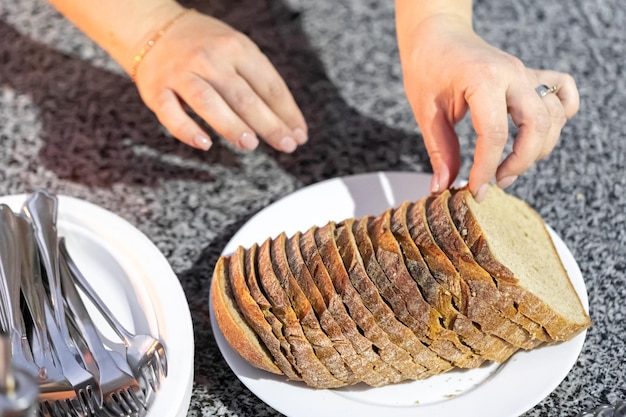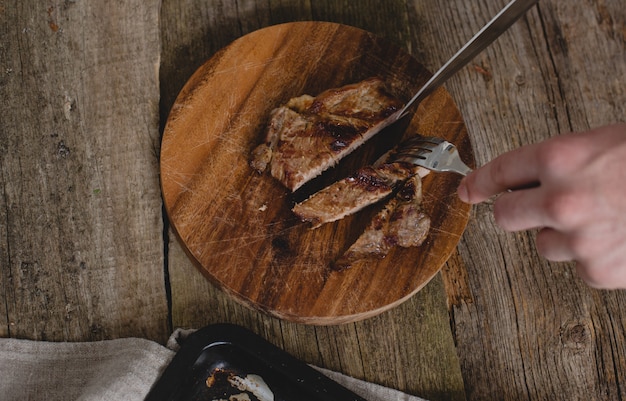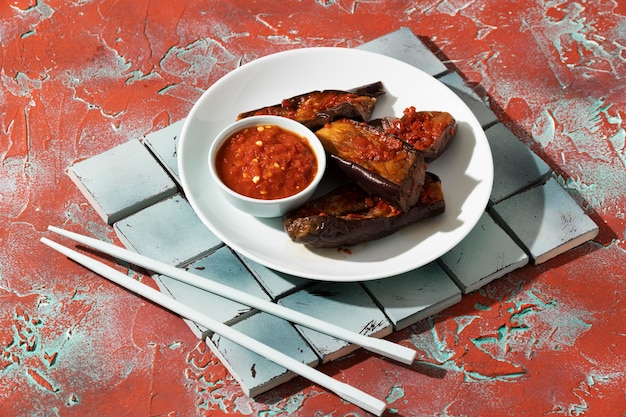Ah, the rib roast. A majestic centerpiece, a culinary masterpiece, and a true crowd-pleaser. There's something incredibly satisfying about carving into a perfectly cooked rib roast, its glistening surface radiating a warmth that rivals the crackling fire in the hearth. But let's face it, the thought of tackling a large cut of meat can feel a bit daunting. The fear of overcooking, the mystery of doneness, and the potential for a dry, tough result can all be rather intimidating. But fear not, my fellow food enthusiasts, because I'm going to guide you through the entire process, step by step, with all the tips and tricks I've learned over years of honing my culinary skills. This isn't just a recipe; it's a comprehensive guide to rib roast success, infused with personal experiences, anecdotes, and a sprinkle of culinary wisdom that will transform you from a hesitant home cook to a confident maestro of meat. So, grab your aprons, sharpen your knives, and let's embark on this culinary adventure together.
(Part 1) choosing the right cut: A Foundation for Success

Just like a painter selecting the perfect canvas, choosing the right cut of meat is the first step toward creating a masterpiece. This might seem simple, but there are a few key considerations that can make or break your rib roast experience. Over the years, I've learned these lessons the hard way, and I want to share them with you so you can avoid those culinary pitfalls. Let's break down the options:
1. prime rib vs. standing rib roast: A Battle of the Cuts
Now, you're faced with a choice: prime rib or standing rib roast? Both are delicious, but like two sides of the same coin, they offer distinct advantages. Prime rib is typically a smaller, more intimate cut, often taken from the center of the rib section. It's usually bone-in, providing a robust flavor and a satisfyingly meaty experience. This cut is ideal for a smaller gathering or if you prefer a more tender, less fatty roast. Imagine a cozy dinner party with close friends, where the prime rib takes center stage, its aroma filling the air with warmth and anticipation.
Standing rib roast, on the other hand, is a larger, bolder statement. It's a true centerpiece, often including the rib bones and the coveted fat cap. This cut is ideal for a grand celebration, a feast for a large gathering, or when you're aiming for a truly spectacular culinary experience. Picture a holiday dinner with extended family and friends, where the standing rib roast becomes the focal point, a testament to your culinary prowess and a source of joyful conversation.
2. Bone-in or Boneless: A Matter of Preference
The next choice you'll face is a classic dilemma: bone-in or boneless? Bone-in roasts, like the knights of yore, hold onto their armor – the rib bones. These bones act as a natural flavor enhancer, adding a rich depth to the meat and helping to keep it moist during cooking. The bone also adds a touch of rustic charm and elegance to the presentation. Imagine the elegant display of a bone-in roast, its glistening surface adorned with a delicate crust, a culinary triumph.
Boneless roasts offer a more streamlined approach, easier to carve and ideal for those who prefer to avoid the hassle of bones. However, they can be a bit drier than their bone-in counterparts, so consider this carefully. A boneless roast might be the perfect choice for a busy weeknight dinner or a more casual gathering, where simplicity and ease are paramount.
3. The Fat Cap: A Secret Weapon for Juicy Perfection
Now, let's talk about the fat cap, that often-misunderstood but essential component of a truly delicious rib roast. It's a thin layer of fat that covers the top of the roast, and it's a culinary secret weapon for achieving a juicy, flavorful result. Don't be tempted to trim it off, thinking it's all about fat and calories. The fat cap renders during cooking, releasing flavorful juices that baste the meat, creating a tender, succulent experience. As the fat melts away, it infuses the roast with a rich, savory depth, turning it into a culinary masterpiece.
Remember, a good layer of fat is your ally in the pursuit of rib roast perfection. It's a source of flavor, moisture, and tenderness, and it will reward your trust with a truly unforgettable culinary experience.
(Part 2) Preparing the Roast: Laying the Foundation for Flavor

Now that you've chosen your champion, it's time to prepare it for its starring role. This is where you can truly unleash your creativity and infuse your rib roast with your personal touch.
1. Seasoning: The Art of Simplicity
I believe in simplicity when it comes to seasoning a rib roast. You don't need a symphony of spices to create a masterpiece. Start with a good quality salt and pepper. I prefer a coarse sea salt for its beautiful texture and robust flavor, and freshly ground black pepper for its vibrant aroma. But feel free to use whatever you like, as long as it's good quality. The key is to season generously and evenly on all sides. Don't be afraid to go heavy on the salt. Remember, salt draws out the moisture and enhances the natural flavors of the meat, adding depth and complexity.
2. A Rub for Extra Depth: Infusing Flavor into the Meat
If you're feeling adventurous, you can create a simple rub to add another layer of flavor. A classic combination is garlic powder, onion powder, and paprika. These three ingredients create a warm, earthy aroma, complementing the rich flavors of the beef beautifully. You can also add a pinch of dried herbs, like rosemary, thyme, or oregano, for a touch of herbal complexity. Just be sure to rub the mixture evenly all over the roast, ensuring every inch is enveloped in this flavorful embrace.
3. A Quick Sear: A Touch of Culinary Magic
Here's a little secret I've learned over the years: a quick sear before roasting helps to seal in the juices and develop a beautiful, caramelized crust. It's a simple technique that adds a touch of magic, transforming your roast from ordinary to extraordinary. Heat a large skillet over high heat and sear the roast on all sides for about 2-3 minutes. This not only adds a layer of flavor but also helps the roast cook more evenly, ensuring a consistently delicious result.
(Part 3) roasting techniques: Mastering the Heat

Now comes the exciting part, the actual roasting! There are a few different techniques you can use, each with its own charm and benefits. I'll focus on two methods that I find consistently deliver the best results, ensuring a juicy, flavorful roast that will delight your senses and leave you wanting more.
1. The Traditional oven method: A Classic for a Reason
This is the classic way to roast a rib roast, and for good reason: it's simple, reliable, and always delivers delicious results. Preheat your oven to 450°F (232°C). Place the roast on a rack in a roasting pan, making sure to leave a good inch or so of space around it. This allows for even heat circulation and prevents the roast from steaming instead of roasting. Roast for 15 minutes at this high temperature, creating a beautiful crust on the outside. Then, reduce the temperature to 325°F (163°C).
Now, here comes the crucial part: continue roasting until the internal temperature reaches your desired level of doneness. Remember, the internal temperature is the key indicator of whether your roast is cooked through. Use a meat thermometer – those old-fashioned methods of poking and prodding are unreliable and can lead to disappointment.
Here's a guide to the different levels of doneness, based on internal temperature:
| Doneness | Internal Temperature |
|---|---|
| Rare | 125°F (52°C) |
| Medium-rare | 135°F (57°C) |
| Medium | 140°F (60°C) |
| Medium-well | 145°F (63°C) |
| Well-done | 160°F (71°C) |
Remember, the roast will continue to cook a little after you remove it from the oven, so aim for a temperature slightly below your desired level of doneness. The roast will "carry over" to the desired temperature during the resting period.
2. The reverse sear: A Technique for Tenderness and Flavor
This is a relatively new technique, but it's become a favorite among culinary enthusiasts for its ability to produce incredibly tender and juicy roasts. The reverse sear method involves cooking the roast at a lower temperature for a longer period of time, followed by a quick sear at a high temperature. This slow-and-steady approach allows the heat to penetrate the meat evenly, ensuring a perfectly tender result.
Preheat your oven to 275°F (135°C). Place the roast on a rack in a roasting pan and roast for 2-3 hours, or until the internal temperature reaches 120-125°F (49-52°C). This slow cooking process allows the collagen in the meat to break down, resulting in a melt-in-your-mouth texture.
Once the roast reaches this temperature, remove it from the oven and let it rest for 30 minutes. This allows the juices to redistribute throughout the meat, ensuring a consistently juicy and flavorful result. Finally, after the resting period, sear the roast over high heat on all sides for about 2-3 minutes. This creates a beautiful, caramelized crust, adding a delightful layer of texture and flavor.
(Part 4) Resting Time: A Crucial Step in the Process
Now that your roast is cooked to perfection, resist the urge to carve into it immediately. It's time for a crucial step: resting. Let it sit for at least 15-20 minutes before carving. This resting period allows the juices, which have been forced to the surface during cooking, to redistribute throughout the meat. This results in a more tender, flavorful, and evenly juicy roast. Trust me, this extra step is worth the wait.
While the roast is resting, this is a great opportunity to prepare your sides. I like to serve my rib roast with roasted vegetables, their natural sweetness and earthy flavors complementing the rich taste of the meat. Creamy mashed potatoes add a comforting element, while a light green salad provides a refreshing counterpoint. It's a classic combination for a reason, balancing the richness of the roast with the freshness of the vegetables.
(Part 5) Carving the Roast: A Simple Guide to Success
The moment of truth has arrived! Time to carve the roast and unveil its culinary brilliance. This might seem daunting, but it's actually quite straightforward. Here's a simple guide to ensure a successful carving experience:
1. Use a sharp carving knife. A dull knife will make the job more difficult and could tear the meat, ruining the beautiful presentation.
2. If your roast is bone-in, cut between the bones to remove the individual rib sections. This allows for easier carving and a more elegant presentation.
3. Slice the roast against the grain. This cuts across the muscle fibers, making the meat easier to chew and more tender. Think of it as "shredding" the meat, releasing its flavorful secrets.
4. Arrange the slices on a platter and serve them with your favorite sides. A beautiful platter adorned with succulent slices of roast, surrounded by colorful vegetables, is a culinary masterpiece that will delight your guests.
(Part 6) Gravy Time: Enhancing the Flavor
No rib roast is complete without a rich, flavorful gravy. It's a simple addition that takes the experience to the next level, bringing all the flavors together in a symphony of taste. Here's a simple method for making a perfect gravy that will enhance your rib roast experience:
1. After you've removed the roast from the pan, pour off any excess fat. You can reserve this fat for other cooking purposes, like sauteing vegetables or making a delicious pan sauce.
2. Deglaze the pan with a bit of red wine or beef broth. This involves adding the liquid to the hot pan and scraping up any browned bits from the bottom, creating a rich, flavorful base for the gravy.
3. Bring the mixture to a boil, then reduce the heat and simmer for a few minutes to thicken the gravy. The simmering process concentrates the flavors, creating a truly satisfying sauce.
4. Strain the gravy through a fine-mesh sieve to remove any lumps. This ensures a smooth, silky texture for your gravy.
5. Serve the gravy hot over the roast and sides. The combination of juicy roast, savory gravy, and colorful sides creates a truly satisfying culinary experience.
(Part 7) Leftovers: A Feast for Days
Let's be honest, there's a good chance you'll have some leftovers. And that's a good thing! Rib roast leftovers are just as delicious as the original, offering a delightful opportunity to create new culinary adventures.
You can use them in sandwiches, creating a hearty, flavorful treat. Or, add them to salads, transforming them into a satisfying meal. For a more substantial dish, chop them up and add them to a pot of soup, adding depth and richness to the broth. I like to make a hearty beef stew with mine, simmering the leftover roast with root vegetables and herbs for a comforting and flavorful meal.
For longer storage, you can freeze the leftovers. Just wrap them tightly in plastic wrap and then again in aluminum foil. They will keep in the freezer for up to 3 months. When you're ready to use them, thaw them in the refrigerator overnight.
(Part 8) Beyond the Basics: Variations and Tips
There you have it – the ultimate guide to cooking a perfect rib roast, a blueprint for culinary success. But don't stop there! The beauty of cooking is that there's always room for creativity and exploration. Here are a few ideas to add some extra flair to your rib roast, turning it from a classic masterpiece into a personal culinary creation:
1. Experiment with different herbs and spices. While a simple salt and pepper seasoning is a classic choice, you can add a touch of personal flair with a blend of rosemary, thyme, and garlic. Or, for a sweet and savory twist, consider a mixture of mustard powder and brown sugar. The possibilities are endless, limited only by your imagination.
2. Try adding a glaze. A simple glaze of honey and soy sauce can add a beautiful shine and a hint of sweetness to your roast. Or, if you're feeling adventurous, try a balsamic glaze or a red wine reduction, adding a layer of complexity and depth to the flavors.
3. Don't be afraid to get creative with your sides. Pair your rib roast with roasted root vegetables, their earthy sweetness complementing the rich flavor of the meat. Mashed sweet potatoes add a touch of sweetness and creaminess. Or, for a more adventurous approach, consider a side of risotto, its creamy texture and savory flavors providing a beautiful counterpoint to the roast.
(Part 9) FAQs
You've got questions, I've got answers! Let's address some of the most common queries about rib roast cooking,
1. How long should I rest the roast?
Resting is crucial! I recommend letting the roast rest for at least 15-20 minutes before carving. This gives the juices time to redistribute throughout the meat, resulting in a more tender and juicy roast. It's worth the wait, trust me!
2. Can I use a cheaper cut of meat?
While a prime rib or standing rib roast is ideal, you can definitely use a cheaper cut of meat, like a chuck roast. Just be aware that it might need a little more time to cook and might not be as tender. But, with the right techniques and a little patience, you can still achieve a delicious result.
3. What temperature should the oven be at?
For the traditional oven method, I recommend preheating your oven to 450°F (232°C) for the first 15 minutes, then reducing it to 325°F (163°C) for the rest of the cooking time. For the reverse sear method, start at 275°F (135°C). Remember to always use a meat thermometer to check the internal temperature of the roast.
4. How can I tell if the roast is cooked to my liking?
You'll want to use a meat thermometer to check the internal temperature. Here's a guide to the different levels of doneness:
| Doneness | Internal Temperature |
|---|---|
| Rare | 125°F (52°C) |
| Medium-rare | 135°F (57°C) |
| Medium | 140°F (60°C) |
| Medium-well | 145°F (63°C) |
| Well-done | 160°F (71°C) |
5. What should I do if the roast is overcooked?
The good news is, even an overcooked rib roast can still be delicious! It might be a bit drier, but you can help to restore some moisture by adding a sauce or gravy. You can also slice the roast thin and serve it in sandwiches or salads.
I hope this guide helps you conquer the art of rib roast cooking and create a feast that everyone will love. Happy cooking, and remember, don't be afraid to experiment and have fun!
Everyone is watching

Corn on the Cob: The Ultimate Guide to Perfectly Cooked Ears
Healthy MealsAh, corn on the cob. Just the name evokes images of sunny days, barbecues, and that sweet, juicy flavour that ...

Perfect Pork Roast Oven Cooking Time: A Guide to Delicious Results
Healthy MealsThere's something truly satisfying about a perfectly roasted pork. The aroma alone is enough to make your mout...

Ham Cooking Time: How Long to Bake, Smoke, or Boil a Delicious Ham
Healthy MealsAh, ham. It's a classic, isn't it? A real crowd-pleaser, especially around holidays. And when done right, it'...

Scallops: The Ultimate Guide to Perfect Cooking
Healthy MealsAh, scallops. Those delicate, sweet, and utterly delicious morsels of the sea. They hold a special place in my...

Spaghetti Squash: The Ultimate Guide to Cooking and Serving
Healthy MealsRemember that time you saw spaghetti squash at the supermarket, looking all bumpy and strange, and thought, "W...
